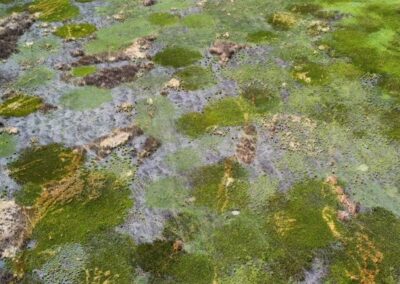Written by Sarah Mervosh, originally published on New York Times on 30 April 2019.
Months of training. Miles upon miles of pounding the pavement. A careful calibration of diet, sleep and the perfect running gear.
It all ends with one race day. And so much waste.
Marathons and other high-profile running events often leave behind vast trails of trash, with plastic water bottles scattered in the streets and mounds of clothing left behind at the starting line. It can be an ugly sight, and over the weekend, the London Marathon made headlines for trying to address the problem by handing out biodegradable, liquid-filled seaweed capsules at one of its mile markers.
But as more and more marathons take steps to reduce their environmental footprint, you may be surprised to learn that the waste you see on the streets after races is not necessarily the biggest problem.
Here’s a look at how marathons are trying to shrink their environmental impact, and what runners and spectators can do to help.
Getting rid of plastic and other trash in the streets
While the bottles and cups that athletes toss in the streets during marathons seem like a problem, most races do a good job of collecting and recycling that litter, according to the Council for Responsible Sport, which evaluates the environmental and social effects of sporting events around the world and offers certification for those that adhere to best practices.
“No one likes to see a street full of single-use plastic bottles, but as long as that’s getting cleaned up and recycled, what makes that any different from you doing that in your home?” said Shelley Villalobos, the group’s managing director.
Recycling is a strong option, she said, and reducing the amount used is even better. Some marathons have gotten creative to try to limit their single-use plastic and other trash.
This year’s London Marathon, for example, reduced the number of plastic bottles by more than 215,000 compared with last year, by cutting the number of drink stations on the course to 19 from 26.
It was one of several steps the marathon took this year as part of a goal to send zero waste to landfills by 2020, and the marathon was still evaluating whether the pods were effective, according to the event director, Hugh Brasher.
In Connecticut, the Hartford Marathon Foundation worked with an engineering company to create a 40-foot-long drinking fountain for the finish line of its race. The contraption, known as the Bubbler, allows multiple people to drink at the same time and is estimated to have saved about 85,000 plastic bottles and wax cups since 2007, according to the foundation.
Some races also collect tossed clothing for donation and offer composting for bananas, apples and other post-race recovery food.
And what about those metallic blankets that runners wear at the end of races? Those can also be recycled. Heatsheets, a popular brand of the blankets, has a program to donate the used blankets to a company that makes wood-alternative decks and railings.
Reducing a race’s carbon footprint
While N.F.L. games and other popular sporting events create enormous amounts of waste, marathons that snake through neighborhoods and past people’s homes are an in-your-face reminder of human consumption. “It brings it out onto the streets, literally,” Ms. Villalobos said. But perhaps their biggest environmental harm is something you can’t readily see: carbon footprint.
For one thing, races give away thousands of T-shirts and medals, which take up materials and energy to make and ship. “If they are over-ordered, that’s wasteful demand,” Ms. Villalobos said. “Is that any better or worse than having single-use plastic bottles and then recycling them?”
The Chicago Marathon, which is the only one of the world’s six major marathons that has been certified by the Council for Responsible Sport, offers participant shirts that are made from recycled material. The ribbon on the finisher medal can also be recycled, said the race director, Carey Pinkowski.
And the marathon starts and finishes in the same park, which reduces the need for driving on the day of the race. “The majority of our participants can walk from their hotel room,” Mr. Pinkowski said.
Offsetting your own carbon footprint
But there is still another problem: All the people traveling to the marathon. The world’s biggest marathons, including Chicago, New York and London, have upward of 40,000 runners, and many of them and their loved ones fly or drive to get there.
Climate Neutral Group, which helps organizations limit and offset their emissions, found that 97 percent of emissions from the Cape Town Marathon came from participants’ air or road travel. The marathon invested in local projects to offset those emissions and has been designated as “climate neutral” since 2014, according to the group.
One of the most effective things you can do to make a marathon more eco-friendly is to offset your own travel, Ms. Villalobos said. Some events, including a 10-mile race in Washington, D.C. that is scheduled for around when the cherry blossoms bloom each spring, offer the chance to buy carbon offsets during race registration.
Some airlines, including United and Delta, also offer options to donate money or miles to offset the greenhouse gas emissions from your travel.
“If they are coming from out of town and they are not planning on planting a few trees while they are in town, I’d say that’s probably the best thing they could do,” Ms. Villalobos said.
Climate Neutral Group can assist in making your event carbon neutral. Contact us on info@climateneutralgroup.co.za.



